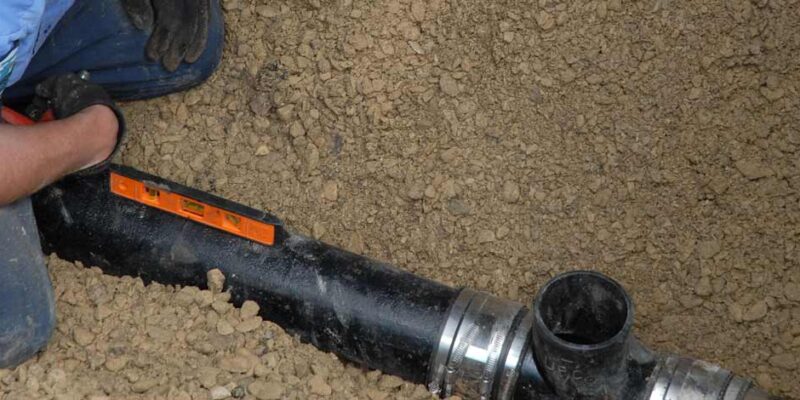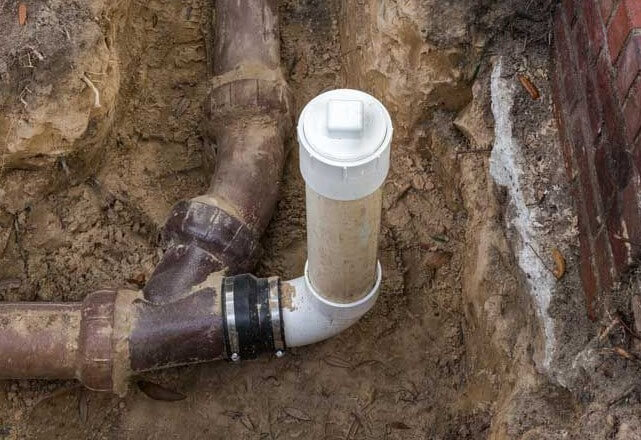Main Sewer Blockages: Causes and Warning Signs


The main sewer pipe is the biggest and most important plumbing part in your home. Over time, it can get damaged because of wrong use, pipes, drains, and other things outside. Eventually, it might get blocked or break, needing big repairs or replacement. Dealing with this wear and tear can be a real pain!
Knowing why sewer pipes get clogged and keeping an eye out for warning signs can help you avoid expensive fixes.
Most homeowners have dealt with a clogged sink or slow bathtub at some point. Fixing one clog is usually not too hard. But what if all the drains in your house start backing up together?
This could mean there’s a clog in the sewer. If cleaning the drains doesn’t work, you might have to fix or change the whole sewer line. Here are some signs that it’s time to repair or replace your sewer line:
Broken sewer pipes won’t let sewage drain right, leading to lots of backups. Pipe damage can happen because:
Sewer pipes can sag over time, which homeowners can’t prevent. It’s natural. A “bellied pipe” happens when part of the pipe sinks because of soil or ground conditions.
This low spot collects waste and paper, causing more blockages.
In the past, some sewer lines were made from porous materials like clay. The connections between pipe parts weren’t as tight as they are now.
When shrubs and trees grow, their roots look for water. If they find a sewer pipe, they might grow into it to get water. Over time, these roots can break the sewer line.

Knowing what you can and can’t flush down the toilet is crucial. Treating your toilet like a trashcan can mess up the sewer drain. When you flush, remember: only toilet paper and human waste should go down.
Grease, oil, and fats are the top culprits for clogged drains. Never pour them down the drain. Instead, pour hot grease into a coffee can or jar and dispose of it once it’s solid.
Many think pouring hot water down the drain with grease helps, but it’s not true. If grease cools, it hardens and sticks to pipes, causing clogs.
Learn what not to put down your drain or garbage disposal to avoid problems.
We’ve gathered four warning signs to help you spot sewer line problems before it’s too late:
We recommend avoiding liquid “drain cleaners” and getting a professional to check that blocked drain. It could be caused by a blockage or break in your sewer line, leading to constant clogs.
It’s tough to know if a sewer line issue is causing your toilet or shower drain to clog. When more than one fixture is backed up, it’s a clear sign that there’s a problem with the sewer line.
If you suspect your sewer drain is clogged, watch for any strange reactions from plumbing fixtures. Look out for:
Sewer lines usually go from your house, through your lawn, and into the city sewage system. Check your lawn for any changes.

While some drain cleaning and maintenance tasks can be done safely by homeowners, sewer repair and replacement should only be handled by a licensed, professional plumber.
Using video inspection can help pinpoint the exact problem location and make repairs quicker and cheaper. Here’s how it works:
Once it’s decided that a sewer pipe needs fixing or replacing, there are several options available.
A backhoe digs up the area around the sewer line to make it easy to reach the problem. After the repair, the backhoe fills the area back in.
Depending on how well your pipes work, where you live, or their design, this might be your only option.
Trenchless repairs involve making small holes at the start and end of the pipe. The old pipe is broken into pieces, and a new pipe is pulled through.
Only the ground at the start and end of the trench is disturbed. This causes less damage to driveways and yards compared to traditional methods.
No matter which option you pick, it’s crucial to have a licensed and skilled professional plumber do the job. At Clog Kings, we offer top-notch plumbing services in Florida. Our plumbers are among the best in the business. We guarantee to diagnose and fix any sewer or drain issue you encounter, often on the same day.
For expert sewer line replacement and repair in Pinellas County, especially in St. Petersburg and Clearwater, trust Clog Kings. Contact us at (727) 479-4028 or reach out online.